Get free scan and check if your device is infected.
Remove it nowTo use full-featured product, you have to purchase a license for Combo Cleaner. Seven days free trial available. Combo Cleaner is owned and operated by RCS LT, the parent company of PCRisk.com.
What kind of malware is Hancitor?
Hancitor is a high-risk trojan-type virus. Developers proliferate this malware using various spam email campaigns such as Here Is Your Fax Email Virus, AT&T Invoice Email Virus, and many others.
After successful infiltration, Hancitor introduces other malware to infect the system. Therefore, this malware opens 'backdoors' for other viruses to infiltrate.
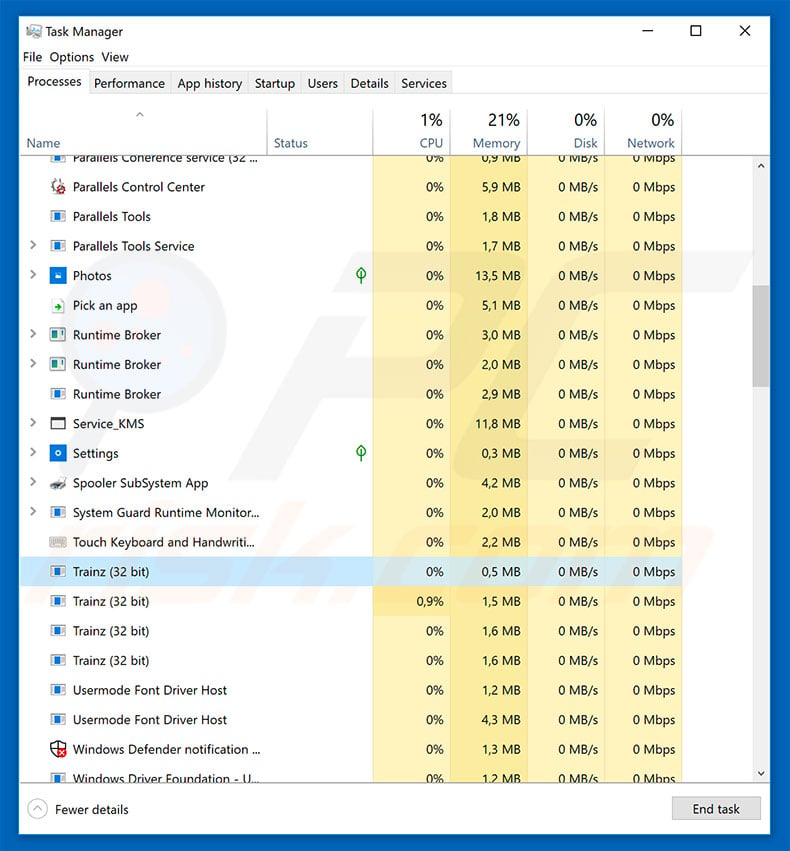
Hancitor in detail
As mentioned above, Hancitor is proliferated using spam email campaigns. Developers send thousands of deceptive email messages that encourage users to open attached documents. These attached files are malicious - they stealthily install Hancitor into the system. This is where the chain infection begins.
By opening the malicious attachments, users inadvertently allow Hancitor to enter their computers. Immediately after infiltration, Hancitor executes scripts that install other trojans (for example, Pony). Infiltrated malware is very dangerous. Most of these viruses gather sensitive information, such as saved logins/passwords, website URLs visited, keystrokes, and so on.
Cyber criminals might gain access to personal accounts (banks, social networks, and so on). In this way, they can steal victims' identities and perform malicious tasks, such as online purchases, money transfers, and so on. Therefore, the presence of malware distributed by Hancitor can lead to serious privacy issues and significant financial loss.
If you have recently opened any suspicious attachments, there is high a probability that your computer is infected. Therefore, scan it with a reputable anti-virus/anti-spyware suite and eliminate all detected threats.
| Name | Hancitor virus |
| Threat Type | Trojan, password-stealing virus, banking malware, spyware. |
| Detection Names | Avast (Win32:Malware-gen), BitDefender (Trojan.Agent.DTQO), ESET-NOD32 (A Variant Of Win32/Kryptik.GRQA), Kaspersky (Trojan-Downloader.Win32.Geral.bqnb), Full List (VirusTotal) |
| Detection Names (MS Excel document spreading Hancitor) | Ad-Aware (VB:Trojan.Valyria.5647), Combo Cleaner (VB:Trojan.Valyria.5647), ESET-NOD32 (VBA/TrojanDownloader.Agent.XAM), Kaspersky (UDS:DangerousObject.Multi.Generic), Microsoft (TrojanDownloader:O97M/Qakbot.VA!MTB), Full List Of Detections (VirusTotal) |
| Symptoms | Trojans are designed to stealthily infiltrate the victim's computer and remain silent, and thus no particular symptoms are clearly visible on an infected machine. |
| Distribution methods | Infected email attachments, malicious online advertisements, social engineering, software 'cracks'. |
| Damage | Stolen passwords and banking information, identity theft, the victim's computer added to a botnet. |
| Malware Removal (Windows) |
To eliminate possible malware infections, scan your computer with legitimate antivirus software. Our security researchers recommend using Combo Cleaner. Download Combo CleanerTo use full-featured product, you have to purchase a license for Combo Cleaner. 7 days free trial available. Combo Cleaner is owned and operated by RCS LT, the parent company of PCRisk.com. |
Similarities with other Trojans
There are dozens of trojan-type viruses proliferated using email spam campaigns (for example, Adwind, Emotet, TrickBot, and FormBook), however, only small percentage proliferate other viruses and, in most cases, they distribute ransomware.
Trojans commonly record sensitive information and save it on remote servers - they pose a significant threat to your privacy and computer safety and must be removed immediately.
How did Hancitor infiltrate my computer?
As mentioned above, Hancitor promotioncampaigns typically distributes malicious Microsoft Office documents. Immediately after opening these files, users are asked to enable macro commands, however, in doing so, they inadvertently grant malicious attachments permission to download and install Hancitor into the system.
Although this malware distribution method is simple and effective, it is not flawless. Note that malicious files are only able to download malware if they are opened using tools from the Microsoft Office suite.
For example, if a .doc file is opened using any program other than MS Word, the malware will not be downloaded. In addition, Hancitor targets the Microsoft Windows Operating System only and, therefore, users or other platforms do not have to worry.
How to avoid installation of malware?
Lack of knowledge and careless behavior are the main reasons for computer infections. The key to safety is caution. Therefore, pay close attention when browsing the Internet. We strongly recommend that you carefully analyze each email attachment received. Files that are irrelevant or have been sent by a suspicious/unrecognizable email address should never be opened.
These emails should be deleted without reading. Furthermore, have a legitimate anti-virus/anti-spyware suite installed and running - these programs delete malicious files before they perform any actions. If you believe that your computer is already infected, we recommend running a scan with Combo Cleaner Antivirus for Windows to automatically eliminate infiltrated malware.
Spam campaign distributing Hancitor trojan:
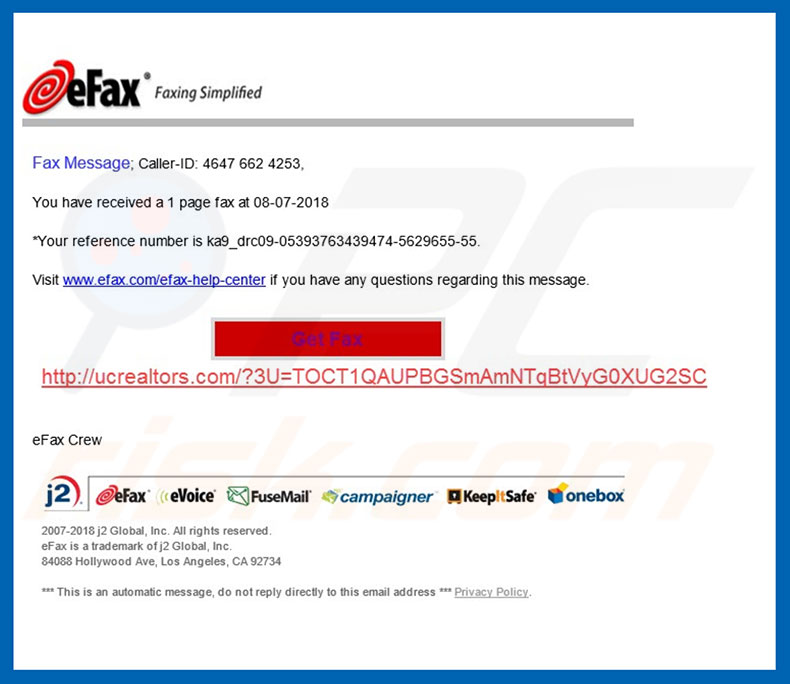
Malicious attachment distributing Hancitor trojan:
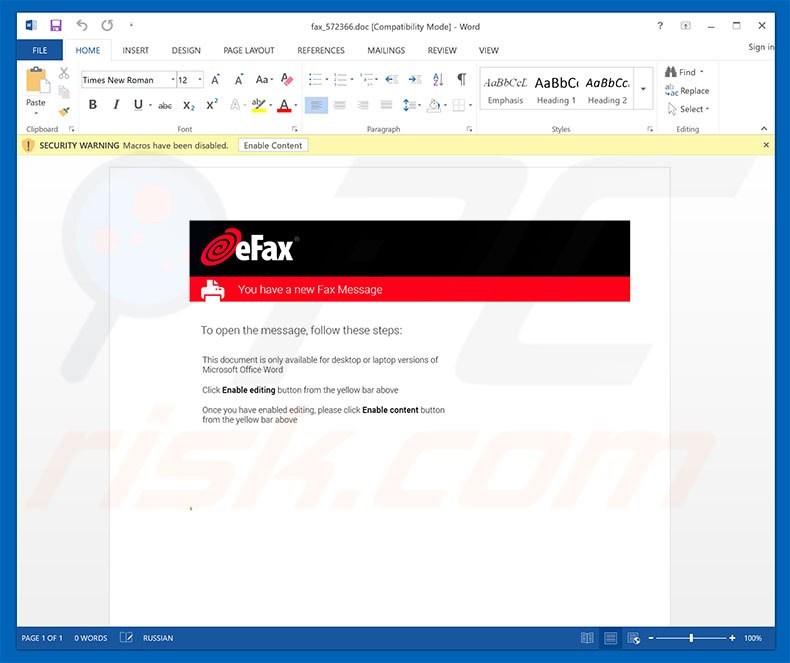
Another email spam campaign used to spread Hancitor trojan:
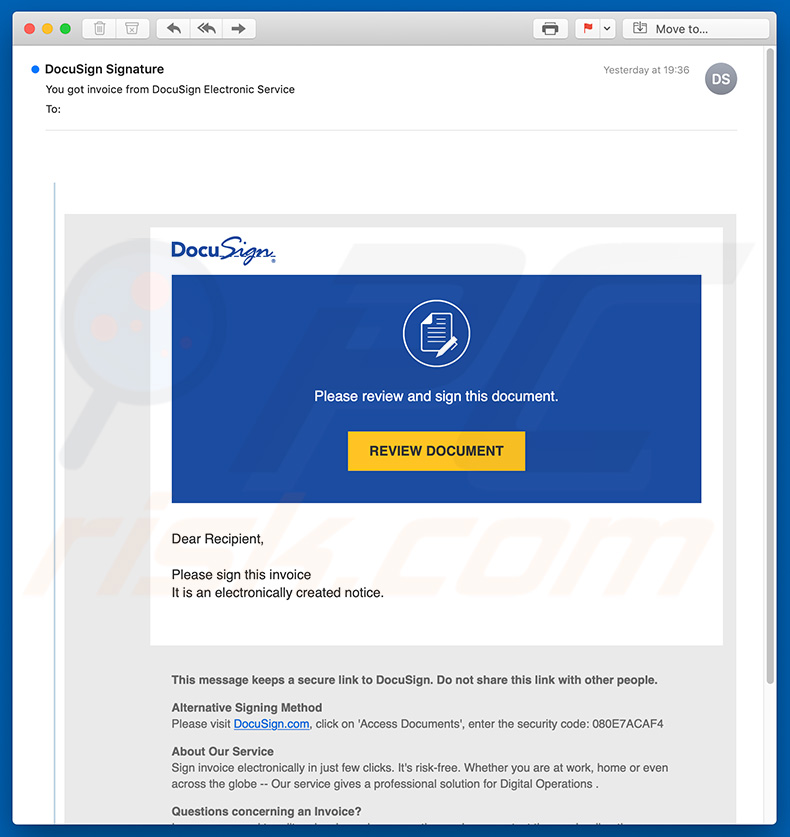
Text presented within this email:
DocuSign
Please review and sign this document.
REVIEW DOCUMENT
Dear Recipient,
Please sign this invoice
It is an electronically created notice.
This message keeps a secure link to DocuSign. Do not share this link with other people.
Alternative Signing Method
Please visit DocuSign.com, click on 'Access Documents', enter the security code: 080E7ACAF4
About Our Service
Sign invoice electronically in just few clicks. It's risk-free. Whether you are at work, home or even across the globe -- Our service gives a professional solution for Digital Operations .
Questions concerning an Invoice?
In case you need to edit an invoice or have questions , please contact the sender directly.
If you cannot see an invoice, see the Help page on our support .
This message was sent to you by DocuSign Electronic Signature Service.
Malicious MS Word attachment ("invoice.doc") that injects Hancitor:
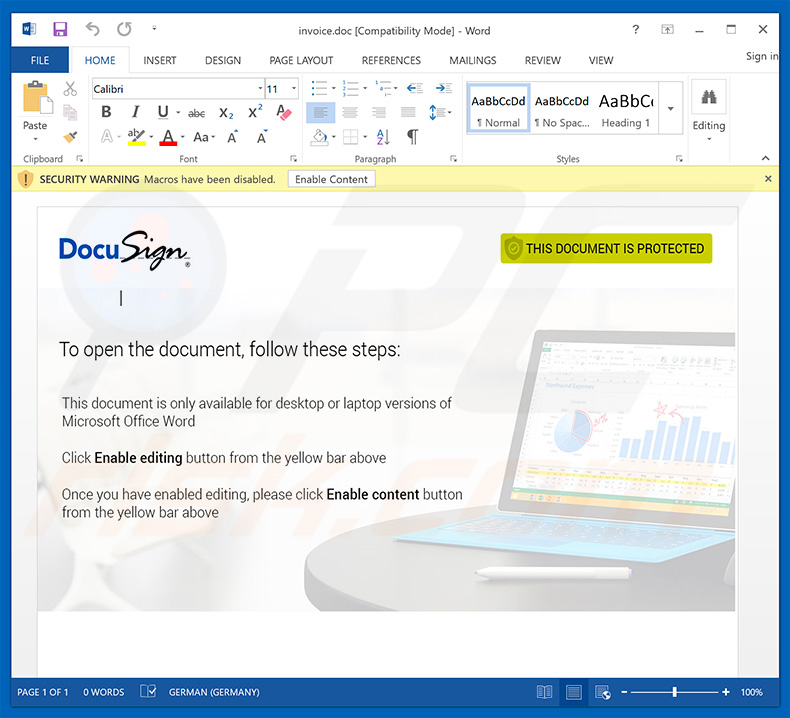
Update April 16, 2020 - Due to the recent outbreak of Coronavirus (COVID-19) infection cyber criminals are taking advantage of the situation and starting various email spam/scam campaigns to spread malware, extract money from unsuspecting users and perform other malicious actions. Hancitor is not an exception.
Here's an example of scam emails that are presented as notifications from Humana Inc. Emails encourage users to open attached files which inject Hancitor into the system. Note that Humana Inc. has nothing to do with this spam campaign - crooks simply use names of various companies and governmental organizations to create the impression of legitimacy.
Screenshot of the malicious attachment (Microsoft Excel document) distributed using this spam campaign:
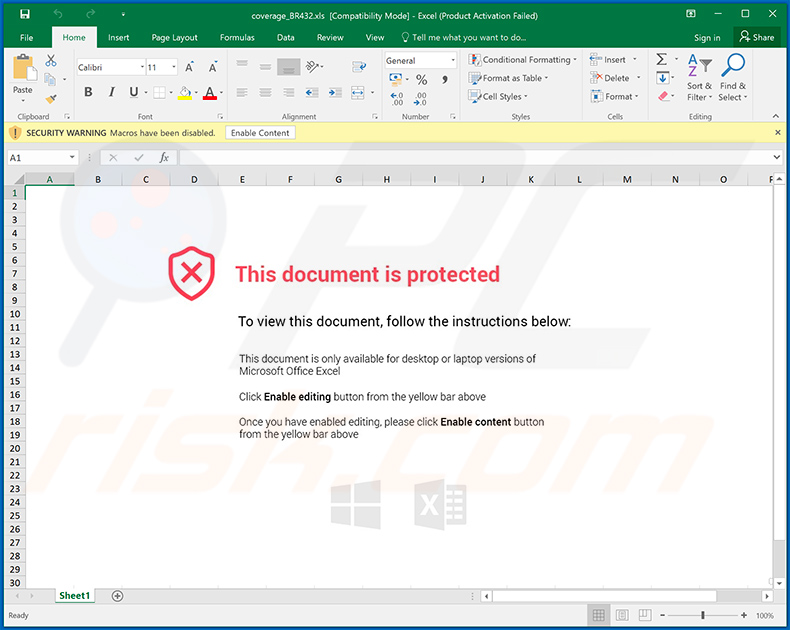
Another malicious MS Word document used to inject Hancitor malware:
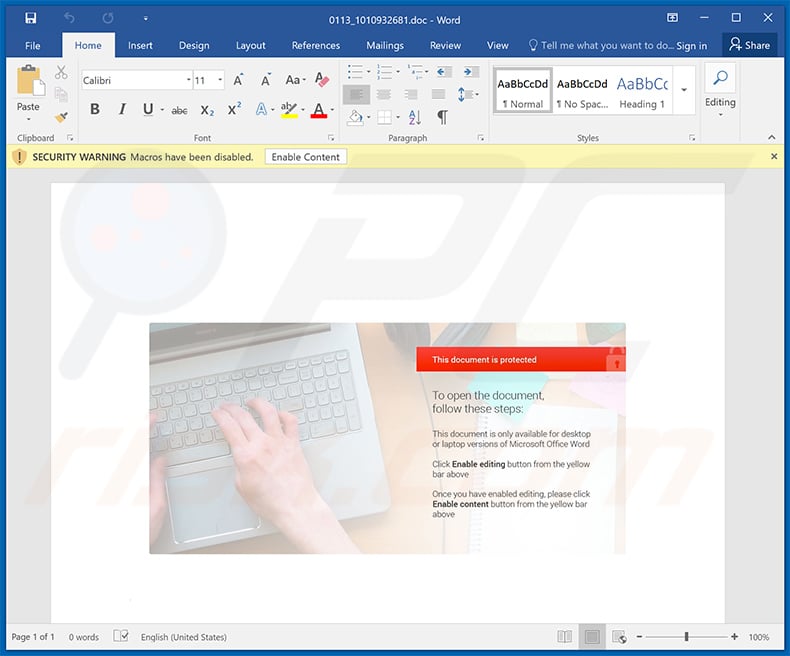
Another example of MS Word document used to spread Hancitor trojan:
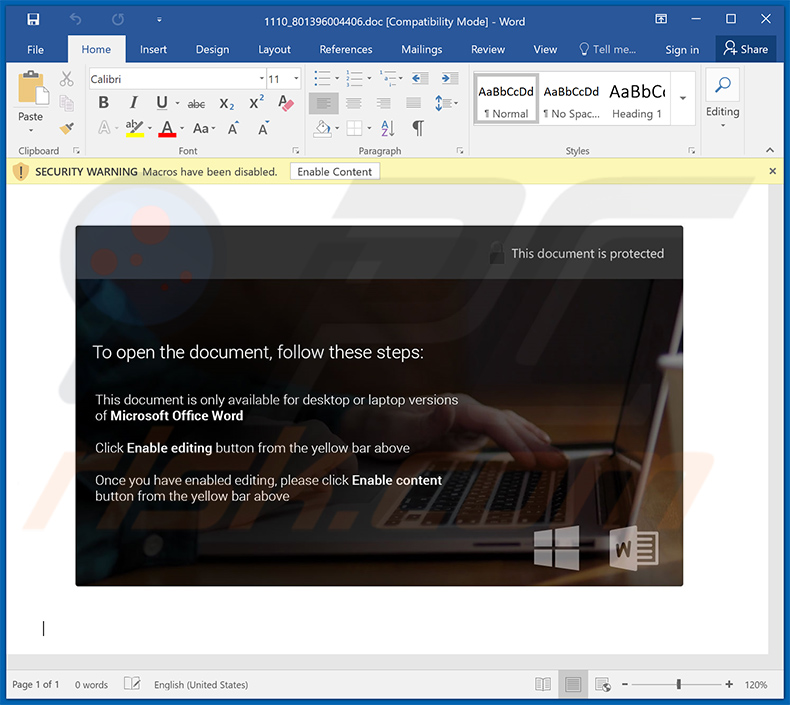
Instant automatic malware removal:
Manual threat removal might be a lengthy and complicated process that requires advanced IT skills. Combo Cleaner is a professional automatic malware removal tool that is recommended to get rid of malware. Download it by clicking the button below:
DOWNLOAD Combo CleanerBy downloading any software listed on this website you agree to our Privacy Policy and Terms of Use. To use full-featured product, you have to purchase a license for Combo Cleaner. 7 days free trial available. Combo Cleaner is owned and operated by RCS LT, the parent company of PCRisk.com.
Quick menu:
- What is Hancitor?
- STEP 1. Manual removal of Hancitor malware.
- STEP 2. Check if your computer is clean.
How to remove malware manually?
Manual malware removal is a complicated task - usually it is best to allow antivirus or anti-malware programs to do this automatically. To remove this malware we recommend using Combo Cleaner Antivirus for Windows.
If you wish to remove malware manually, the first step is to identify the name of the malware that you are trying to remove. Here is an example of a suspicious program running on a user's computer:

If you checked the list of programs running on your computer, for example, using task manager, and identified a program that looks suspicious, you should continue with these steps:
 Download a program called Autoruns. This program shows auto-start applications, Registry, and file system locations:
Download a program called Autoruns. This program shows auto-start applications, Registry, and file system locations:

 Restart your computer into Safe Mode:
Restart your computer into Safe Mode:
Windows XP and Windows 7 users: Start your computer in Safe Mode. Click Start, click Shut Down, click Restart, click OK. During your computer start process, press the F8 key on your keyboard multiple times until you see the Windows Advanced Option menu, and then select Safe Mode with Networking from the list.

Video showing how to start Windows 7 in "Safe Mode with Networking":
Windows 8 users: Start Windows 8 is Safe Mode with Networking - Go to Windows 8 Start Screen, type Advanced, in the search results select Settings. Click Advanced startup options, in the opened "General PC Settings" window, select Advanced startup.
Click the "Restart now" button. Your computer will now restart into the "Advanced Startup options menu". Click the "Troubleshoot" button, and then click the "Advanced options" button. In the advanced option screen, click "Startup settings".
Click the "Restart" button. Your PC will restart into the Startup Settings screen. Press F5 to boot in Safe Mode with Networking.

Video showing how to start Windows 8 in "Safe Mode with Networking":
Windows 10 users: Click the Windows logo and select the Power icon. In the opened menu click "Restart" while holding "Shift" button on your keyboard. In the "choose an option" window click on the "Troubleshoot", next select "Advanced options".
In the advanced options menu select "Startup Settings" and click on the "Restart" button. In the following window you should click the "F5" button on your keyboard. This will restart your operating system in safe mode with networking.

Video showing how to start Windows 10 in "Safe Mode with Networking":
 Extract the downloaded archive and run the Autoruns.exe file.
Extract the downloaded archive and run the Autoruns.exe file.

 In the Autoruns application, click "Options" at the top and uncheck "Hide Empty Locations" and "Hide Windows Entries" options. After this procedure, click the "Refresh" icon.
In the Autoruns application, click "Options" at the top and uncheck "Hide Empty Locations" and "Hide Windows Entries" options. After this procedure, click the "Refresh" icon.

 Check the list provided by the Autoruns application and locate the malware file that you want to eliminate.
Check the list provided by the Autoruns application and locate the malware file that you want to eliminate.
You should write down its full path and name. Note that some malware hides process names under legitimate Windows process names. At this stage, it is very important to avoid removing system files. After you locate the suspicious program you wish to remove, right click your mouse over its name and choose "Delete".

After removing the malware through the Autoruns application (this ensures that the malware will not run automatically on the next system startup), you should search for the malware name on your computer. Be sure to enable hidden files and folders before proceeding. If you find the filename of the malware, be sure to remove it.

Reboot your computer in normal mode. Following these steps should remove any malware from your computer. Note that manual threat removal requires advanced computer skills. If you do not have these skills, leave malware removal to antivirus and anti-malware programs.
These steps might not work with advanced malware infections. As always it is best to prevent infection than try to remove malware later. To keep your computer safe, install the latest operating system updates and use antivirus software. To be sure your computer is free of malware infections, we recommend scanning it with Combo Cleaner Antivirus for Windows.
Frequently Asked Questions (FAQ)
My computer is infected with Hancitor malware, should I format my storage device to get rid of it?
This malware can be removed from the operating system without formatting the storage device. It can be achieved by following the steps provided in our malware removal guide.
What are the biggest issues that malware can cause?
Cybercriminals can use malware to steal identities, drain financial accounts (or steal money in other ways), cause further infections, encrypt files, and more. It depends on the type of malware (its capabilities).
What is the purpose of Hancitor malware?
Hancitor operates as a backdoor malware. It is used to infect computers with additional malware (e.g., ransomware, cryptocurrency miners).
How has the Hancitor malware infiltrated my computer?
It is known that threat actors use email to deliver Hancitor. They send emails containing malicious MS Office documents to trick users into infecting computers with Hancitor. This malware infects computers after enabling macros commands in malicious documents. In other cases, malware is distributed via fake installers for cracked software, untrustworthy sources for downloading software/files, fake updaters, and certain Trojans.
Will Combo Cleaner protect me from malware?
Yes, Combo Cleaner can detect and remove almost all known malware from computers. High-end malware usually hides deep in the operating system. Therefore, a computer must be scanned fully (using a full system scan) to remove high-end malware.
Share:

Tomas Meskauskas
Expert security researcher, professional malware analyst
I am passionate about computer security and technology. I have an experience of over 10 years working in various companies related to computer technical issue solving and Internet security. I have been working as an author and editor for pcrisk.com since 2010. Follow me on Twitter and LinkedIn to stay informed about the latest online security threats.
PCrisk security portal is brought by a company RCS LT.
Joined forces of security researchers help educate computer users about the latest online security threats. More information about the company RCS LT.
Our malware removal guides are free. However, if you want to support us you can send us a donation.
DonatePCrisk security portal is brought by a company RCS LT.
Joined forces of security researchers help educate computer users about the latest online security threats. More information about the company RCS LT.
Our malware removal guides are free. However, if you want to support us you can send us a donation.
Donate
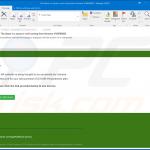
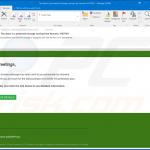
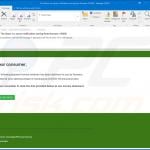
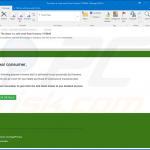
▼ Show Discussion